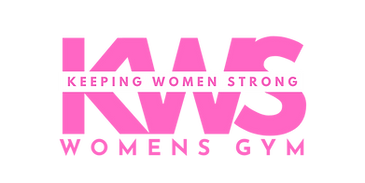“If You Don’t Use It, You Lose It" inside and out: Funny Little Signs & Strength Loss Timeline & Solutions
- helenfkws
- Sep 6
- 4 min read

We all know the saying 'if you don't use it, you lose it'— and when it comes to muscle, and lots of other body functions it’s true! But strength doesn’t disappear overnight. Sometimes the first clues are sneaky (and a little funny)!
Funny Little Clues Your Strength is Declining
Couch Escapes: You suddenly grunt louder than usual getting off the couch (after more than 1 attempt).
Grocery Bag Gymnastics: That “one trip only” grocery bag carry has turned into two… or three.
The Jar Battle: A pickle jar now feels like it’s been sealed by Superman and like a full upper-body workout.
Sock Struggles: Balancing on one leg to put on socks feels like a circus performance.
Everyday Mountains: Stairs seem taller, chairs seem lower, and you’re wondering when household objects got heavier.
Funny? Yes. But they’re early signs your strength is slipping.
And here’s the kicker: it’s not just your biceps or quads that are affected.

Strength is More Than Muscle
When you stop moving and training, it’s not only your muscles that lose power.
Strength training (or the lack of it) affects nearly every system in your body:
Heart & Lungs: Aerobic and muscular fitness are intertwined. Less activity weakens your cardiovascular system, reducing endurance and oxygen delivery.
Bones: Without regular stress (lifting, resistance), bones become weaker, raising the risk of osteoporosis.
Brain: Exercise drives blood flow and growth factors that protect memory, mood, and focus. Skip it, and cognitive decline creeps in faster.
Cells: Strength training boosts mitochondrial health (your cells’ energy factories). Without it, fatigue sets in sooner.
Blood & Immunity: Reduced muscle mass means poorer glucose control, lower metabolic rate, and a less resilient immune system.
Skin & Tissue: Protein breakdown speeds up, collagen suffers, and skin loses its elasticity and glow.
In short: strength loss accelerates aging from the inside out.
The Speed of Strength Loss
Strength loss depends on time out of action, age, your baseline muscle mass, diet (especially protein intake), and activity level in and outside of the gym.
Timeline of Strength Loss Without Training
Within 2–3 weeks:
Strength begins to decline, mainly due to loss of neuromuscular efficiency (your brain-muscle connection weakens before actual muscle tissue shrinks).
3–4 weeks:
Noticeable reductions in muscle size can begin. Research shows fit adults can lose around 5–10% of muscle mass after 3–4 weeks of complete inactivity.
4–6 weeks:
Muscle protein breakdown exceeds synthesis (building), leading to more visible muscle shrinkage and reduced endurance.
8+ weeks:
Significant reductions in muscle mass and strength, especially in older adults.
Past ~12 weeks, muscle loss can be substantial if no resistance training or adequate protein intake is maintained.
Factors That Speed Up Strength Loss & Accelerate Ageing
Here’s the tough love:
Women can lose 3–5% of muscle mass per decade after 30, and the decline speeds up after 40–50. The steep decline in essential hormones impacts women majorly during perimenopause and menopause.
This loss (called sarcopenia) isn’t just cosmetic. It leads to weaker bones (osteoporosis), slower metabolism more weight, lower energy, and higher risk of chronic disease.
Low protein intake: Accelerates atrophy since the body lacks the building blocks for building, repairing and maintenance of every body structure.
Complete inactivity (e.g., bed rest, injury): Muscle loss can start in as little as 7–10 days.
The less you challenge your body, the faster the aging process runs ahead of you.
How to Hold onto Strength (and Youth!)
The good news? You can stop the slide (and get stronger again) with just a few smart moves each week.
Strength Train Two to Three+ times a Week: Focus on big moves (machines, full body workouts, squats, deadlifts, push-ups, free weights, rows etc) to challenge multiple muscles.
Keep Protein High: Aim for 25–30 g (1.6–2.2 g per kg of body weight per day) at each meal to feed muscles, bones, organs and skin.
Challenge Balance: Practice standing on one leg, lunges, and step-ups — small wins keep independence later in life.
Don’t Neglect the Brain & Heart: Cardio (huff & puff) + strength is the ultimate anti-aging combo.
Sleep & Hydration: Muscles repair while you rest, and water keeps cells functioning.
Hormone replacement after 40 helps women protect muscle, bone, heart, brain and strength — keeping the body stronger and younger, longer.
Everyday movement (walking, standing, lifting things) helps preserve muscle.
Sit less — too much sitting is a silent strength sucker.
Muscle memory: Once you’ve built muscle, it’s regained faster after a break compared to starting from scratch.
Key STRENGTH takeaway:
Strength isn’t just about flexing in the mirror. It’s the foundation of healthy aging, strong bones, healthy body weight, sharp memory, radiant skin, and a resilient body.
So, the next time you struggle with a jar or wobble putting on your socks, take it as a cheeky reminder:
'If you don’t use it, you lose it' — but 'if you train it, you gain it'.
KEEP STRONG preserve your STRENGTH and AGE POWERFULLY.
See you in the gym where every rep counts.




Comments